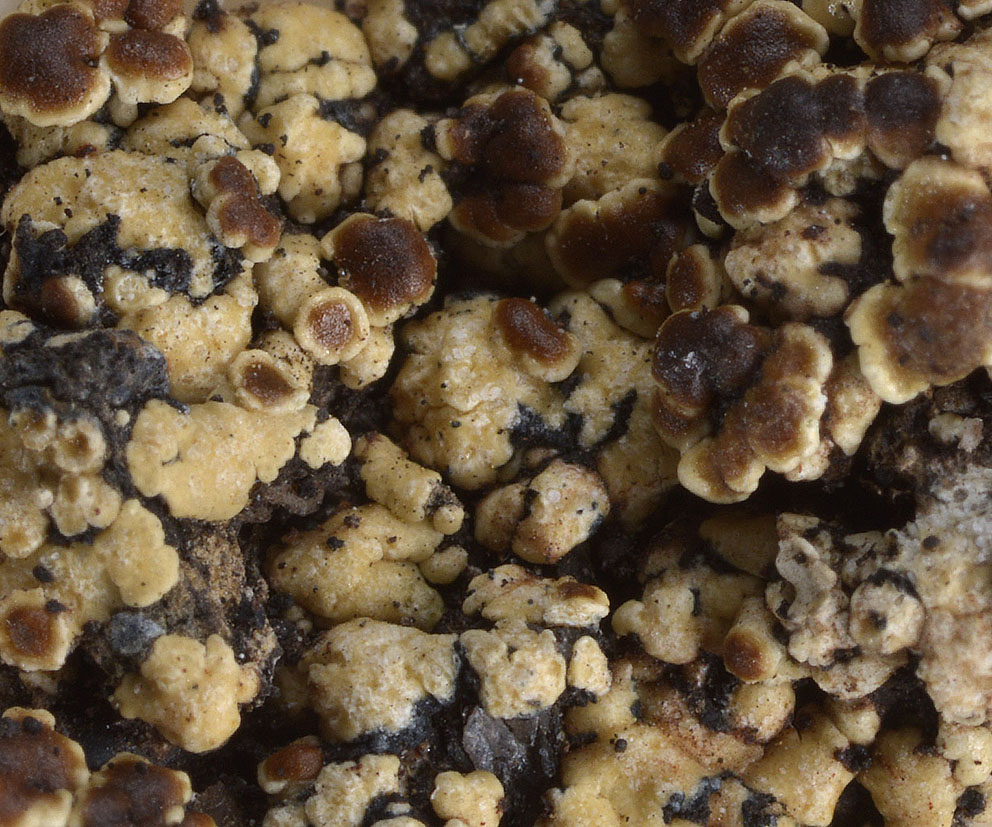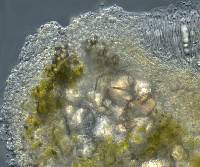
- Home
- Search
- Images
- Species Checklists
- US States: O-Z >
- US National Parks
- Central America
- South America
- US National Parks
- Southern Subpolar Region
|
|
|
|
Family: Lecanoraceae
|
MycoBank no. 833380 Diagnosis. Thallus saxicolous, consisting of small, pale beige, placodioid, rosettes with lobate, marginal areoles and sessile, lecanorine, crenate apothecia with a deep reddish brown disc; lacking secondary metabolites. Type: Ecuador. Galapagos: Isabela, Volcán Darwin, south-western slope, above Tagus Cove, 0˚13’43.3’’S, 91˚19’47.3’’W, 724 m alt., transition zone, SW-exposed lava flow of weathered AA-lava with sparse vegetation (Macraea laricifolia, Dodonaea viscosa, Croton scouleri, Cordia revoluta and Jasminocereus thouarsii), under overhang, 12-Nov-2007, Ertz, D. 11813 (CDS 37172–holotype). Description. Thallus saxicolous, moderately thickened, distinctly placodioid, central areoles with discrete margins, marginal areoles with short lobes; surface pale beige to ochraceous, smooth, matt to ±waxy, epruinose, lacking soredia. Apothecia numerous, often very densely aggregated, circular to undulate, occasionally deformed by mutual pressure, 0.4–1.2 mm in diam., adnate to soon sessile, lecanorine, margin persistent or rarely excluded, entire to irregularly crenate, Chemistry. All spot tests negative, UV– (dull); no lichen substances detected by HPTLC [specimen analyzed: Ertz, D. 11813 (CDS 37172–holotype)]. Etymology. Named in honor of the Belgian lichenologist Dr. Damien Ertz, who discovered this species in the Galapagos. Ecology and Distribution. Currently known only from its holotype specimen, collected on exposed lava in the transition zone of Volcán Darwin, Isabela Island. Notes. The distinctly squamulose thalli of P. ertzii with their lecanoroid apothecia cannot be confused with any other lecanoroid lichen in the Galapagos. The growth morphology of this species indicates that it might currently best be accommodated in Protoparmeliopsis. The species of Lecanora from the Sonoran Desert Region, which have, since their treatment in Ryan et. al (2004), been transferred to this genus, differ from P. ertzii by their content of usnic acid in their cortex and terpenoids, fatty acids and/or β-orcinol depsidones in their medulla. None of these species has large insoluble crystals in the thalline exciple. |













